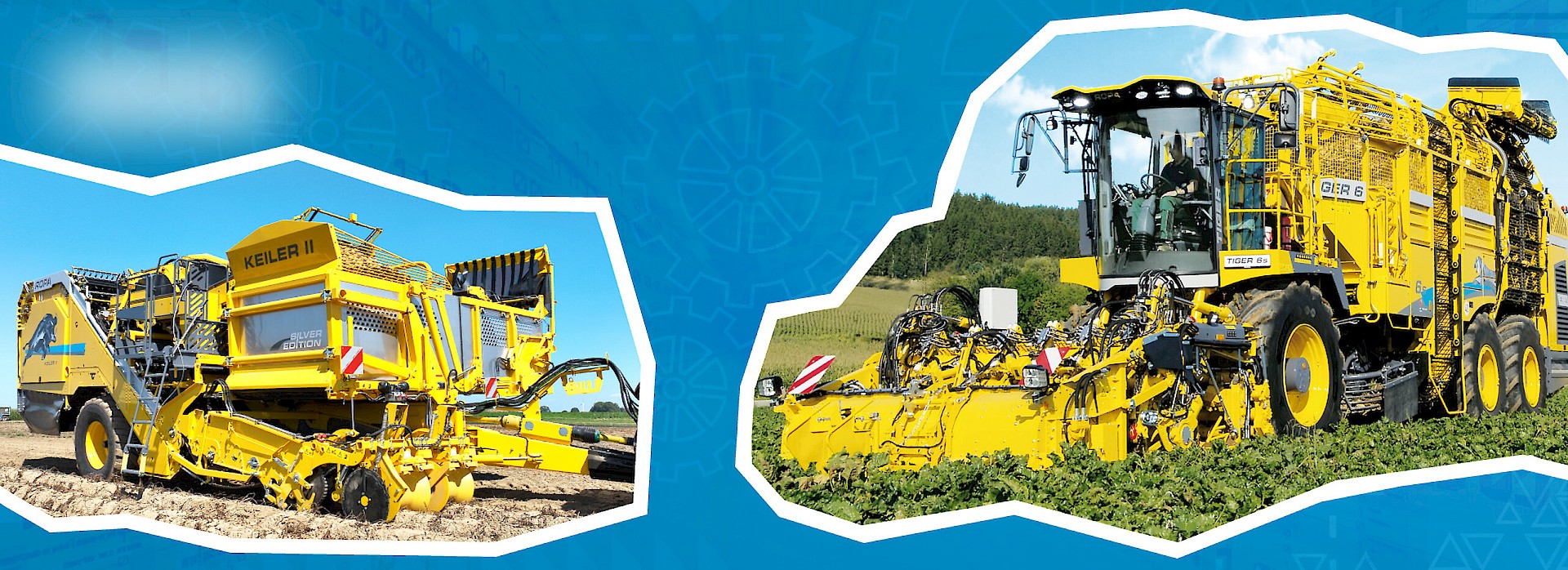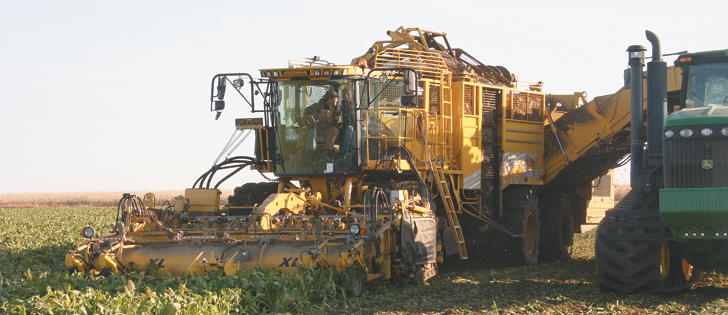BURDETT, Alta. — Sugar beet harvesting equipment that is new to southern Alberta is providing benefits for two area farming operations and the Taber sugar factory.
Forty Mile Ventures, which is operated by the Kamper Group south of Burdett, bought a Ropa Tiger Micro Topper this year that defoliates, digs and loads beets in one pass.
The German-engineered unit completes a complement of beet harvesting equipment that includes a Ropa Big Bear beet cart and a euro-Maus self-propelled machine for cleaning and loading beets from windrows onto trucks.
The Maus unit is jointly owned by Forty Mile Ventures and Varekamp Farms, also of Burdett.
The typical sugar beet harvesting process in the region involves initial defoliation with a pull-type chopper followed by a digger, which loads the crop into trucks. The beets are then hauled to the nearest of seven receiving stations operated by Lantic Sugar, the sugar processing factory in Taber, Alta.
The Ropa system reduces labour and equipment needs.
“For us, it’s quite the improvement over what we used to do,” Henk ?Kamper of the Kamper Group said while harvesting in mid-October.
“When we started out in the sugar beets, we ran a 12-row pull type and another defoliator that was pulled by another tractor and then we’d have four semis hauling to the beet dump. Now, we basically went down to just an operation of one digger and one cart. And we have one guy on the beet Maus. It has simplified harvest by quite a bit.”
Kees Kamper, also of the Kamper Group, said the beet harvesting crew has been reduced from nine men to two, who are able to dig 70 to 90 acres per day.
The wide floater tires on the micro topper and tracks on the beet cart reduce field compaction, as does vastly reduced truck traffic in the field.
The machine harvests eight rows at a time on 22-inch row spacing and can run at 3.5 to 4 m.p.h.
Though new to southern Alberta, similar beet harvest equipment has been commonly used in Europe for years and is taking hold in parts of the United States.
“It’s great technology. It’s not new technology,” said Lantic Sugar agriculture superintendant Andrew Llewelyn-Jones.
“In the United States, quite a few of the co-ops are moving in this direction where Maus equipment is being used, especially in the Michigan areas and certainly in the southern Minnesota area.”
The system provides a cleaner beet delivered to the plant, he added.
“Because we grow beets in an area where most of the soils are characterized as sandy loams, we get a lot of sand and grit comes into the plant,” he said. “The more we can reduce that, the more efficient the equipment is to run.”
The harvester defoliates, digs and cleans the beets and can hold 24 tonnes before offloading into the beet cart. The cart piles the beets in a windrow on the edge of the field.
A Maus unit is later used to clean and load beets from the windrow onto trucks. Its extended reach allows trucks to remain on the road while being loaded, which eliminates problems with trucks stuck in fields, ruts, equipment damage and soil compaction.
The trucks, contracted through Lantic, take the beets directly to the Taber factory. It reduces truck traffic and waiting times at the Burdett beet receiving station, where the Vare-kamp and Kamper crops would otherwise be hauled.
Kees Kamper said he and his sons were familiar with the Ropa technology, having used it before they bought land in Alberta several years ago.
“We were used to this kind of system in the Netherlands, so it’s not new to us.”
Added Henk: “If you look at the global sugar beet industry, this is the way they do it everywhere else in the world except for North America.”
The equipment is expensive, so they adopted it gradually, beginning with the beet cart in 2011, the Maus loader last year and the harvester this year.
Tony Varekamp of Varekamp Farms said working with Kamper made the move more economical. He estimated that it requires 1,000 acres of beets to justify the cost of the equipment, which the two farms have between them.
The labour issue was a major factor in his decision to participate.
“We have to compete with the oilfield, but we can’t (in wages), so that’s why we have to look at more efficient ways to deliver our products,” said Varekamp.
The digger also allows more flexibility at harvest, allowing 24 hour operation if necessary to extend the harvest window, said Henk Kamper.
“It enables us to dig in more adverse conditions as well, and it has reduced our cost of harvest by quite a bit.”
Llewelyn-Jones said the system has raised questions from other beet growers about how it works and whether Lantic is showing favouritism in its co-operation with the venture.
“That’s not the case. The growers concerned are not treated any differently to anybody else other than the fact that they just don’t haul the beets to the piling ground,” he said.
“Whether we haul them from the piling ground or we haul them from the Maus pile, we’re still hauling beets from that vicinity to the factory, so the advantage to us as a company is that we get a much cleaner beet coming in.”
Llewelyn-Jones said the company supports grower initiatives that can make harvest more efficient.



